#but this could be used for any sort of modern or other period setting
Text
Random Bridgerton thought! Potential for AU fics.
I haven’t read the books so I don’t know how Lady Whistledown continues after her identity is revealed or how it all ends for her writings, but I’m imagining a fic that can take place in any time period post-Regency/after the canon timeline.
Reader is a member of the Bridgerton bloodline and is a writer who has taken up the mantle of Lady Whistledown, using it as his/her/their pseudonym. It’s become tradition and runs in the family. The name gets passed down like a torch, to keep the mystery of “Who is Lady Whistledown really?” alive. The only people who ever know the true identity/identities of the author(s) behind Lady Whistledown’s works are kept within the family. So it’s a big, protected secret - forever an unsolved mystery to the public. A situation similar to how “Carolyn Keene” is multiple unidentified people. Either Reader and his/her/their spouse are both writers, or maybe Reader is working with his/her/their cousins and/or siblings to publish new works. Either way, Reader is collaborating with others to create new stories.
This has been continued throughout generations and eras, passed down to any writer who enters the Bridgerton family. Whether through birth, marriage, or adoption, Lady Whistledown is a pseudonym for anyone who holds enough creativity and talent to bring pen to paper. Whether they be screen writers, playwrights, journalists, novelists, etc. Any man or woman within the Bridgerton family, regardless of surname changes due to marriages or other reasons, is welcome to be a part of it. As time keeps moving forward and the world changes, Lady Whistledown remains to witness it all.
#bridgerton x reader#bridgerton imagine#lady whistledown#random fic ideas#random thoughts#pls tag me if you write this#i’d love to read it#so I might be back on my Downton/bridgerton crossover thought train#but this could be used for any sort of modern or other period setting#that takes place after the timeline Bridgerton is set in#bridgerton sister#bridgerton!sister#bridgerton!granddaughter#bridgerton!descendant#bridgerton!brother#bridgerton!sibling
45 notes
·
View notes
Note
How many languages do you speak?
You are always talking about alchemist that lived all around the world in very differente time periods. And you have mentioned several times that there's a ton of numerology hidden in their texts, counting syllables and letters of certain words and paragraphs. So one would assume you need to read them in the original language it was written, right?
That's a really good question! As with most really good questions, the answer is "kinda, it depends!"
So! Most alchemical texts are written in some form of coded language, but the nature of that code depends on the era and culture the text is being written in. Depending on how its written, modern scholars have a lot of different tools for cracking open alchemical esoterica.
Most ancient Greek/Byzantine texts are written in postclassical Greek. But, they're often written in dense philosophical prose. The reader needs to be familiar with the likes of Plato, Aristotle, and the early Neoplatonists, to make sense of them. Luckily for us, people have been studying postclassical Greek for nearly 2000 years. There are many excellent translations into English.
Late Egyptian alchemists wrote almost entirely in pictograph code. Not as in hieroglyphics, mind you. Egyptian alchemical recipes often made use of custom character sets and symbols that represented alchemical concepts. (One famous example, the Formula of the Crab, uses a complex diagram that looks like a centipede to represent a particular gold compound.) These are damn near impossible to read without expert help.
At the same time, Jewish and Syriac writers of the era could get by on the fact that not everyone could read Hebrew and Syriac lol. The language barrier itself acted as a sort of copyright system for protecting their ideas. Luckily for us, many of these texts were preserved and translated by medieval Arab scholars!
Speaking of Arabic, once you hit the Islamic Golden Age, the amount of alchemical literature increases by a factor of ten. Thing is, the Islamic Polymaths weren't all that interested in obscuring their work. The Islamic Golden Age was all about copying and translating older works, and compiling them into big textbook/dictionaries. They're not intentionally encoded, they're comparatively easy to read once you get a good translation. Thing is, you gotta know your Neoplatonism. Medieval Islamicate scholars love Neoplatonism.
Then we get the reintroduction of alchemy to Europe around the 10th century. What you get is about 400 years of monks painstakingly translating medieval Arabic into Latin. A lot of these texts are very well preserved, and have good translations into English.
Then, around the late 14th century, European entrepreneurial alchemy kicks into high gear, and THIS is where we get all those fancy numerology encoded alchemical texts. Renaissance alchemists loved themselves some puzzles. This would be fine if they were all just writing in Latin, but the printing press meant they could write in any damn language they please. You get a lot of French, German, Dutch, Italian, and antiquated English alchemical texts, and they can be a bitch to read without help.
BUT the introduction of the printing press also gave us something useful: cheap picture books! Late renaissance alchemists loved writing in word games and coded metaphor, but they also loved including esoteric diagrams. And the thing about esoteric diagrams is --if you know your stuff-- you don't need to speak 15th century french to read a picture. Which isn't a replacement for reading the original translation, not even close, but the explicit purpose of these images was to prove to other alchemists that the author knows what they're talking about. So if you can read them, you can get a damn good sense as to what the text is about.
This was fun to write so I'm gonna plug my patreon if you wanna see me write more about alchemy.
1K notes
·
View notes
Note
This is kind of random, but would it have been a struggle for a big busted women to wear fashionable silhouettes in the medieval era? I’ve heard some costume historians discuss that there were forms of bust support, but most of what I’ve seen pre-1500s seems like it would have been a nightmare for any ancestor with a similar bodytype to wear. Am I just from a line of women doomed to horrible back pain? (On the flip side of the situation, I’ve found corsets and stays to be rather comfortable, so that’s not a problem)
As a fellow big boob haver, I have good news for you! There were pretty good Medieval bust supporting garments and I have tested one of them.
With sturdy fabric, tailoring and lacing you can create pretty good bust support. Lacing was popularized first in 12th century in form of bliaut, and in 14th century tailoring became standard for everyday garments. I don't know how well bliaut supported the bust, but since it doesn't fit super snugly, I assume it doesn't distribute the weight of the boobs as well as tailored supporting garments and therefore isn't as supportive. I'm also not actually sure if there was proper bust supporting garments before that, I haven't looked into it. I know Romans bound their breasts with cloth wrapped around the chest, so maybe that technique continued (at least for those who especially needed it) till lacing and tailoring became a thing. For more about how supporting garments developed in Europe through history, I have a post about development of lacing, which coincides pretty well with that history from 12th century forward.
Personally I have experience with Medieval Bathhouse dress, which was used in the Germanic Central-European area roughly in 14th to 16th century. It's called the Bathhouse dress because most depictions of it are from bathhouse settings, but there's depiction also in bed chambers and other contexts, so I think it's pretty safe to assume it was used more generally as an undergarment. It often had separate cups for the boobs (see the only extant garment left of it, the so called "Lengberg Castle Bra"), but not always. Unlike most other undergarments at the time, it was sort of a shift (the lowest layer) and a supporting garment combined into one.
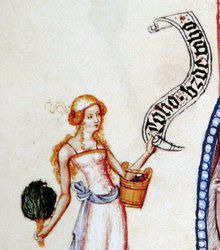


I sewed my own recreation of it (with some alterations because I made it for my everyday use, not as a historical recreation) and did a post about my results, where I go deeper into the history of the garment too. I didn't construct it very well and I did an error in the design of the back, which cause the strain of the shoulder straps to focus too much on very specific spots in the back panel, which eventually made the fabric there break too many times. (There were some other smaller design flaws too, like the waistline is lower than my natural waist so it rose and wrinkled annoyingly.) I did use it daily (except when I washed it) for a fairly long time though and it was super comfortable and helped a lot with back pain (and shoulder pain caused by use of modern bras). I hate that I've had to go back to modern bras because I haven't had the time to remake it yet. (I'll probably make a follow up post once I get around to it, where I go through the issues of the first version and how I addressed them in the next attempt.) Well fitted and shaped bodice which is then laced does surprisingly much even without any additional reinforcements.


I haven't made a Medieval kirtle (though I will some day), but it was the more widely used Medieval supporting garment, which eventually replaced Bathhouse dress in the area where that was used. Kirtle is worn over a shift, but it broadly works similarly. Kirtles could be front, side or back laced depending on the time period and how the Kirtle was constructed. Multiple layers of kirtles could be used and looser overgarments (like houppelande) were often used on top of it. Kirtle was used by everyone, including men, but for those who didn't need bust support, it's purpose was mainly to create the fashionable silhouette. Here's three depictions of kirtles from 15th century. First unlaced, but has lacing on the front, second close up of the side lacing and third shows nicely how both front and side/backlacing shaped the bust.

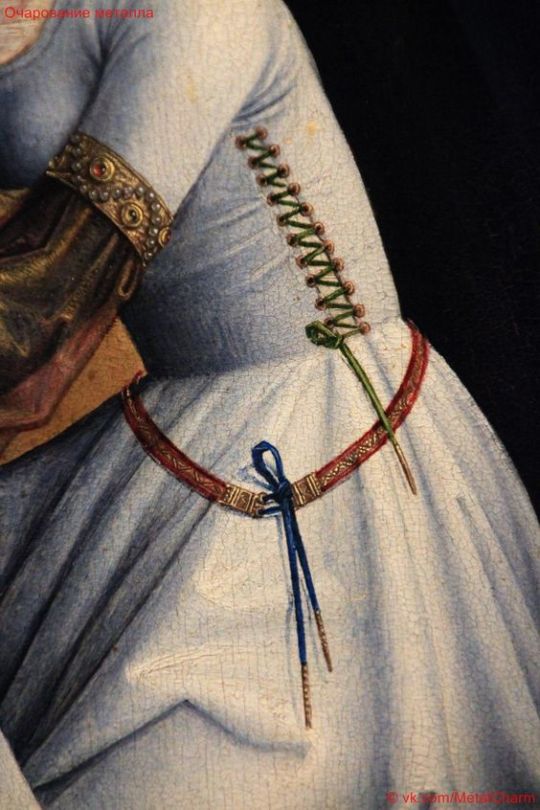
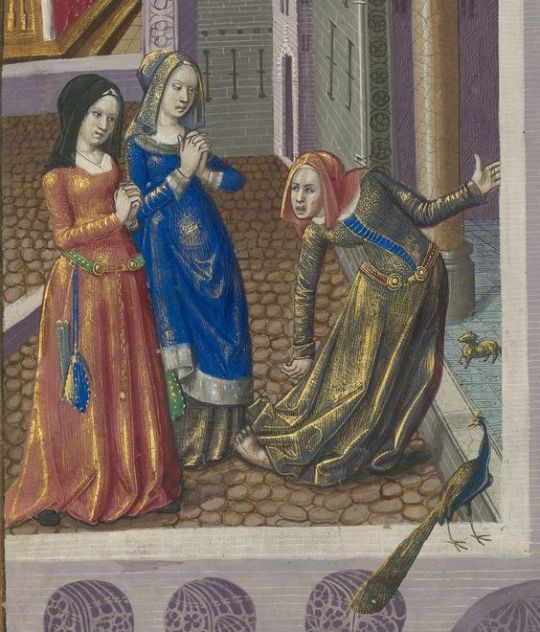
Morgan Donner is a costumer, who focuses a lot on Medieval costuming and has a big bust, so while I haven't personally tested the supportiveness of kirtle, she certainly has. The kirtle bodice part needs to be patterned to accommodate the breasts by giving it round shapes and the kirtle needs to be a little too small so there's room to lace it to fit well. Lining also helps to reinforce the fabric and make it more firm and supportive. Here's Morgan's pattern from the tutorial in her website and how the kirtle eventually fits for her. (Also look at the handsome boy in his handsome matching outfit.)

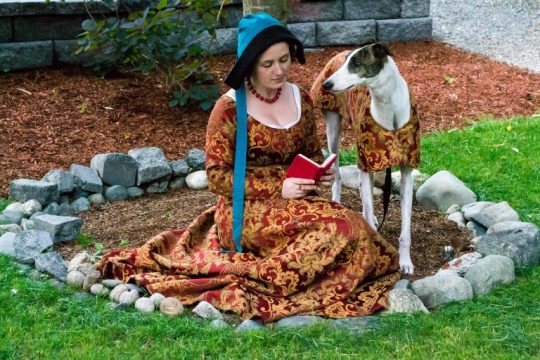
She also has a video relating to the same kirtle project, where she explains her method to pattern a kirtle specifically so it's supportive for big bust.
In 16th century more stiffness was added to kirtles, first with very stiff lining and then with boning, but that doesn't necessarily add to the bust support, rather it just allows the kirtle to shape the bust and the body in general more and better support a heavy skirt. Firm fabric secured snugly with lacing is already very good at distributing the weight of the boobs to the whole torso.
In conclusion, at least since 14th century people with our body type were not doomed to eternal back pain and even before that some ways to help with it were probably used.
#historical fashion#fashion history#dress history#history#historical costuming#historical sewing#sewing#crafts#costuming#fashion#medieval fashion
233 notes
·
View notes
Note
I'm doing a College class on Ancient Foods. My focus is on Honey like the different recipes and usages in Medieval era. I found like a couple recipes, a thing on religious relation ("Milk and Honey of Paradise") /Crusades, medicinal use, and possibly bees/beeswax because I was struggling to get something.
Y'all have any recommendations?
(I've brought Zoe in on this one; the following is a collaborative effort. Also I'm assuming you have access to your university library so you can get ahold of the cited material below quickly and for free.)
Can you include beverages? Honey is the main ingredient in mead, which should give you a lot to talk about. Susan Verberg is the premier researcher on medieval mead, and has some excellent works on both mead making and honey production. She has a website at https://medievalmeadandbeer.wordpress.com/ where you can find both her formal publications and her blog.
If you do want to talk about beverages, there were other medieval drinks that used honey. Some citations for you:
Breeze, Andrew. “What Was ‘Welsh Ale' in Anglo-Saxon England?” Neophilologus, vol. 88, no. 2, 2004, pp. 299–301.
Fell, Christine E. “Old English ‘Beor’." Leeds Studies in English, vol. 8, 1975, pp. 76-95.
You can also go into cultural symbolism; here are a couple on that:
Enright, Michael J. Lady with a Mead Cup: Ritual, Prophecy, and Lordship in the European Warband from La Tène to the Viking Age. Four Courts Press, 2013.
Rowland, Jenny. “OE Ealuscerwen/Meoduscerwen and the Concept of ‘Paying for Mead'." Leeds Studies in English, vol. 21, 1990, pp. 1-12.
Also you might want to look into the general concept of the "mead of poetry" from the Old Norse sources. You can find the origin story for that in the Prose Edda, I believe.
Definitely check out https://www.foodtimeline.org for recipes with honey during the period - they have more than you'd expect. There's also a few medieval cookbooks you can parse through. Here's an online one you can sort through that does a great job modernizing the translations: https://www.medievalcookery.com/etexts.html
As for honey itself -- there's actually quite a bit of research on that! Honey was quite a specialized trade, and most of the medieval world used it for sweetener, so there's a good amount of research.
A few leads:
honey as an alternative to sugar, which was expensive, imported, and could indicate class
honey grading: honey was graded based on location/provenance, type (lavender, orange blossom, etc.), and also by grade. However, their method of grading was very different to our modern one.
honey as a preservative, not just for flavor
Articles on this subject:
(DEFINITELY this one!!) Fava, Lluis Sales, et al. “Beekeeping in Late Medieval Europe: A Survey of Its Ecological Settings and Social Impacts.” Anales de La Universidad de Alicante. Historia Medieval, no. 22, 2021, pp. 275-96, https://doi.org/10.14198/medieval.19671.
Wallace-Hare, David, editor. New Approaches to the Archaeology of Beekeeping. Archaeopress, 2022. JSTOR, https://doi.org/10.2307/j.ctv2b07txd.
Verberg, Susan. “Of Hony: A Collection of Mediaeval Brewing Recipes for Mead, Metheglin, Braggot, Hippocras &c. — Including how to Process Honey — from the 1600s and Earlier,” 2017. Academia.edu.
If you want to look more into the medicinal usage, Cockayne's Leechdoms, Wortcunning, & Starcraft collects all the medical & scientific texts of the Old English period. It's old enough to be public domain, so it's available on the Internet Archive and HathiTrust in searchable form, meaning you can just ctrl-F "honey" and see what comes up.
Let us know how it goes!
58 notes
·
View notes
Text
on the jujutsu mindset and power
what does it mean to be powerful?
in this post (click), i talked about how pre-defection geto operated from a place of arrogance, thinking himself better than non-sorcerers even before he defected. to expand on that, in reality most sorcerers think the same way to some degree.
(geto's case is particularly unique in that he grew up with non-sorcerer parents while having an extraordinary CT—and that later he set out to do what most sorcerers would only think of in moments of weakness. despite his background, his skills were impressive enough to earn him half of the moniker "the strongest duo," sharing the title with someone like gojo who was essentially born and bred for jujutsu. in any case, i did explore on why his background could have a lot to do with how he processed everything post-riko in that first post and a little here (click) and here, too (click)).

in chapter 74, we get some context on the time vessel association and subsequently, the history of jujutsu and how it came to be. it's said that tengen themself laid the moral foundation of modern-day jujutsu in the nara period (ad 710-784), just before the golden age of jujutsu in the heian period (ad 794-1185). despite tengen's efforts, a clash of ideas persisted between jujutsu and religion (Buddhism).
the most interesting part of the conversation here, though, is that the representative of the cult says that, "even jujutsu sorcerers who have authorization beyond normal rights for many things cannot lay hands on non-curse users," implying that historically, jujutsu sorcerers have always had more authority than non-curse users, curse users, and non-sorcerers, an authority etched in a set of agreed upon rules that ultimately developed into the modern jujutsu laws, which were established by the big three clans (click for more context).
aligned with tengen's teachings during the nara period, these rules serve as a ceiling of sorts, to disarm the power sorcerers could potentially wield against the powerless. but as we see with sukuna later on in the heian period, power can be more desirable than morality. as opposed to the famous "with great power, comes great responsibility" quote, something tengen seemed to push for, great power also comes with great arrogance, and the great lust to exercise it.
while modern jujutsu is considerably more "civil" and organized, the sentiment still lingers. the recent system centers around the concept of duty towards humanity, an obligation to protect those who cannot protect themselves from cursed spirits—or in other words, to protect the powerless. as geto once said in the anime, "survival of the weakest. that's how a society should be. the weak help each other and discourage any who are too strong."
even to its roots, the jujutsu education system instills a sense of responsibility in its young to use their powers for the benefit of society, but it's written there in fine-print: "you have power, and you have more of it than other people." we see how this manifests in two major ways, the first being an attitude of apathy (like student gojo, and to an equal or lesser extent, many other sorcerers), and the second being pride in purpose (like student geto). either way, both projections come from a place of "i am better than them, therefore _."
herein lies the cleverness of the jujutsu machine: the more powerful you are, the better you are as a sorcerer, thus the more you're put to work to serve its current purpose. for those who care, this acknowledgment of power becomes incentive—until it breaks them. unfortunately, with its lack of resources, the system eats its tail by exploiting its own sorcerers, who are also lacking in numbers. this is the cause of sorcerer resentment and it's what pushes them to leave or turn. after all, why does it seem like they are powerless when they've been taught all their lives that they are powerful?
the secretive nature of jujutsu makes matters worse because sorcerers do not receive direct feedback from the people they have a duty to protect, resulting in a lack of real emotional connection, of empathy. and it's here where arrogance thickens. non-sorcerers cannot give you validation for your work, and the system barely gives any, if at all. you need to have an overflowing reservoir of self-assurance to be able to get through your day to day as a sorcerer. you need to be at least a little bit arrogant to be a sorcerer. you need to believe you matter enough to make a difference, because if not you, then who?

since power is such a big theme in jjk, i do hope we get to see it punctuated in a nice conclusion by the end of the series. because really, what does it mean to be powerful when power isolates? what does power mean when you're alone?
38 notes
·
View notes
Text
I was asked by @cardassian-artistry:
I don't want to argue or anything, I'm just curious. What are your critiques of Marxist economics?
Ok, so, I want to clarify that I am neither an economist nor a Marx scholar. I am an informed lay person, who has also had the opportunity to spend a lot of time talking to my close friend who is an economist (well, sort of; his work is at the intersection of econ and CS). He's also very left-wing, and we've both read the relevant portions of Marx and have discussed Marx's place in the history of economics quite a lot, so I have, I think, more informed opinions on this particular topic than most people.
Right, ok, so there are a few things to note about Marx's economic theories. The first is that he does not really propose any sort of economic model in the modern sense. Ideally, an economic model should be predictive (probably a lot of Marxists will already disagree at this point, but I think it's not worth arguing with them because I doubt I will convince anyone). That is to say, an economic model should look at measurable quantities about some part of the economy, and relate these quantities to other measurable quantities, so that we can make predictions about how the economy will behave under different conditions.
Many modern day, orthodox economic theories do not meet these criteria. Those theories are also bad. Or, more accurately: they aren't even theories at all, they're just like, vague ideas. We should have higher standards than that for our economic models.
Anyway, predictivity: Marx mostly doesn't attempt to achieve this. He sort of gestures at a specific, predictive model when he talks about "congealed labor time" (I'll get to this) and so on, but he doesn't make it mathematically or measurementally precise enough to actually use it for anything, or to test if it's true. So there's a sense in which, by the epistemic standards I hold at least, Marx's theory of the economy is not actually saying very much to begin with.
Marx does, however, make some qualitative but testable claims. These are mostly sort of divorced from his economic theories as such, it seems to me, but they are claims pertaining to the economy, so they're worth evaluating. Most prominently, he claims that capitalism is bound to undo itself and give way to communism, via proletarian revolution. He very much thought this was going to happen in his lifetime or in the period immediately after. This did not pan out. You can make excuses for why this hasn't happened yet, as the early Christians did when the rapture didn't come, but I don't think any of these excuses are very convincing. He claimed this and he was wrong. As others have pointed out, at least Marx made a claim which could be proved wrong, which is braver than many thinkers—and probably cannot be said of many of his contemporaries in classic economics.
The second big point about Marx's understanding of the economy is that it comes largely from Adam Smith, whose work he studied intensely. Marx's early work is less concerned with the technical details of the economy, and was of course influenced above all else by Hegel. But Marx's later, more economic work draws very heavily from Smith.
Adam Smith's work has all the same problems. Economists like Smith, Marx, and Ricardo set the groundwork for what would come later, but their understanding of how economies actually behave was both far too simplified and far too mathematically unsophisticated to be useful as such.
And, right, this brings us to the labor theory of value, which Marx also gets from Smith. Well, modern economic theories tend not to use a "theory of value" at all, because… what does that even mean? How do you measure "value"?
Is "value" price? That's something you can measure! But Marx seems to say "no", value is not just price. And if value was price, then Marx's theory of value would be straightforwardly false. Marx claims that the value of a good is proportional to the average labor time it takes to produce that good in the given society in which the good is being produced. Well, this is not true of price (in Marxian terms, "exchange value"). So Marx's "value" cannot be price, if his theory is to hold water.
What is it then? Well, Marx and Smith don't really say. And they definitely don't say how to measure it. So their claims about value and labor time and so on don't amount to much, they don't really amount to testable claims about the real world. They amount to claims about this ill-defined idea of "value" that has relevance only internally within the system of Marxian thought. As such, many of Marx's economic claims don't actually say anything about the economy to begin with.
The upshot is that a lot of Marx's specific claims about the economy are either untestable or simply wrong, which is pretty damning. His theories are far too simplistic to model the economy accurately, and his dialectical method—far from remedying this simplicity—simply introduces more vagueness into his claims.
Marx did not know calculus. With a few lucky exceptions, it is generally difficult-to-impossible to model any real world process of significant complexity with any precision without calculus. Basically every modern day economic model makes use of differential equations. Marx, Smith, and Ricardo did not. A priori, therefore, it would be very surprising if their ideas turned out to be correct. And they don't.
So, I've been pretty hard on Marx. Is there any value to Marx's thought?
Well, I think, yes. Quite a lot, in fact.
Marx's work is sometimes split into an "early Marx", for example as represented in the 1844 Manuscripts, and a "mature Marx", as represented in Capital. People debate the degree to which there is continuity between these two periods, or whether the periodization really makes sense at all. But it's undeniable that Marx's thinking evolved significantly over the years. In particular, Marx's early work is much more concerned with the humanistic effects of living under capitalism. This is where Marx's theory of alienation comes from. He is concerned, everywhere but especially in this early writing, with how it feels to be an industrial worker in a capitalist society. And I think his analysis here is absolutely spot on. It has, in fact, been pretty influential on my own thoughts about markets and private property.
Marx also advanced a materialist conception of history, and of society generally. I think Marx's materialism was too teleological, and too wrapped up in nineteenth century ideas of Progress, but I still think that to a first order approximation his assertion that history is driven by the factors of production was basically correct, and was not remotely obvious at the time. For this I think he should be celebrated.
I think Marx was, in a certain sense, a victim of his time. Almost all the critiques that can be made of his economic theorizing per se are found in the writing of all the classical economists. And it is in this domain where I think he makes the most demonstrable errors. That is to say: most of what is bad in Marx is not that new, and (I think) most of what is new in Marx is quite good.
There's another reason to take Marxism seriously, too. I think that a really significant amount of good thinking about history, society, and the nature of wealth and power has been presented under a "Marxist" heading, or assumes fluency with Marxist ideas. From Marxist humanists like E.P. Thomson to the revolutionary leaders of Third-Worldism. Not that any of these people are above critique, to be sure. But anyway, in this regard I think Marx's thought is a lot like Bertrand Russell's work on logic (I love the Marx/Russell comparison, because they both would have hated it): less important for its actual content than for the work of the people it inspired, and for the century+ of ideas they produced.
77 notes
·
View notes
Text
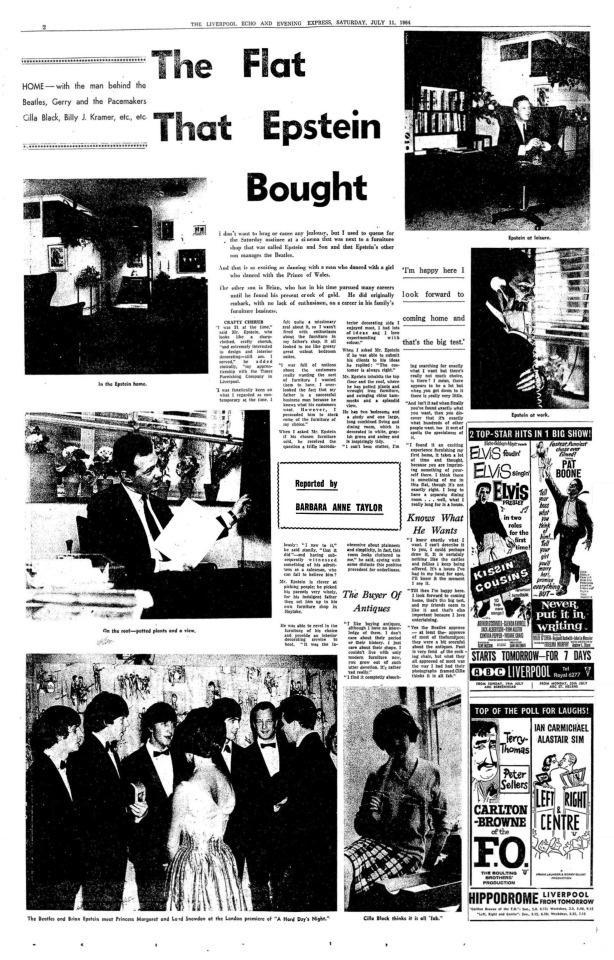
The Flat That Epstein Bought - Liverpool Echo - July 11, 1964
HOME - with the man behind the Beatles, Gerry and the Pacemakers, Cilla Black, Billy J. Kramer, etc, etc.
Reported by Barbara Anne Taylor
---
I don’t want to brag or cause any jealousy, but I used to queue for the Saturday matinee at a cinema that was next to a furniture shop that was called Epstein and Son and that Epstein’s other son manages the Beatles.
And that is as exciting as dancing with a man who danced with a girl who danced with the Prince of Wales.
The other son is Brian, who has in his time pursued many careers until he found his present crock of gold. He did originally embark, with no lack of enthusiasm, on a career in his family’s furniture business.
CRAFTY CHERUB
“I was 21 at the time,” said Mr. Epstein, who looks like a sharp-clothed, crafty cherub, “and extremely interested in design and interior decorating - still am. I served,” he added stoically, “my apprenticeship with the Times Furnishing Company in Liverpool.
“I was fanatically keen on what I regarded as contemporary at the time. I felt quite a missionary zeal about it, so I wasn’t fired with enthusiasm about the furniture in my father’s shop. It all looked to me like greasy great walnut bedroom suites.
“I was full of notions about the customers really wanting the sort of furniture I wanted them to have. I overlooked the fact that my father is a successful business man because he knows what his customers want. However, I persuaded him to stock some of the furniture of my choice.”
When I asked Mr. Epstein if his chosen furniture sold, he received the question a trifle incredulously: “I saw to it,” he said stonily, “that it did” - and having subsequently witnessed something of his adroitness as a salesman, who can fail to believe him?
Mr. Epstein is clever at picking people; he picked his parents very wisely, for his indulgent father then set him up in his own furniture shop in Hoylake.
He was able to revel in the furniture of his choice and provide an interior decorating service to boot. “It was the interior decorating side I enjoyed most, I had lots of ideas and I love experimenting with colour.”
When I asked Mr. Epstein if he was able to submit his clients to his ideas he replied: “The customer is always right.”
Mr. Epstein inhabits the top floor and the roof, where he has potted plants and wrought iron furniture, and swinging chintz hammocks and a splendid view.
He has two bedrooms and a study and one large, long combined living and dining room, which is decorated in white, grapish green and amber and is inspiringly tidy.
“I can’t bear clutter, I’m obsessive about plainness and simplicity, in fact, this room looks cluttered to me,” he said, eyeing with some distaste this positive precedent for orderliness.
The Buyer of Antiques
“I like buying antiques, although I have no knowledge of them. I don’t care about their period or their history. I just care about their shape. I couldn’t live with only modern furniture now, you grow out of such utter devotion. It’s rather sad really.”
“I find it completely absorbing searching for exactly what I want but there’s really not much choice, is there? I mean, there appears to be a lot but when you get down to it there is really very little.
“And isn’t it sad when finally you’ve found exactly what you want, then you discover that it’s exactly what hundreds of other people want too. It sort of spoils the specialness of it.
“I found it an exciting experience furnishing my first home, it takes a lot of time and thought, because you are imprinting something of yourself there. I think there is something of me in this flat, though it’s not exactly right. I long to have a separate dining room... well, what I really long for is a house.
Knows What He Wants
“I know exactly what I want. I can’t describe it to you, I could perhaps draw it. It is certainly nothing like the castles and follies I keep being offered. It’s a house I’ve had in my head for ages, I’ll know it the moment I see it.
“Till then I’m happy here. I look forward to coming home, that’s the big test, and my friends seem to like it and that’s also important because I love entertaining.
“Yes the Beatles approve - at least they approve of most of the furniture: they were a bit scornful about the antiques. Paul is very fond of the rocking chair, but what they all approved of most was the way I had their photographs framed. Cilla thinks it is all fab.”
50 notes
·
View notes
Note
Hi! You said you could help talk me through feudal worldbuilding, and I’d love to pick your brain!
Absolutely! Probably easiest to hit me up over discord (I'm _gremble) and then I would be happy to talk your ear off. 🤣 My wheelhouse is very narrowly focused on mid 9th century England (re: what Anglo Saxon society/military/governance looked like when the vikings rolled up), and iirc, some of the features you mentioned being interested in are more the product of later medieval political structures. I cannot help you with those, but I can probably help with some of the overall mental shifts, because a lot of the things we take for granted in the modern era were just............ not the way things worked back then.
In particular, the word "general" in your initial ask jumped out at me, because it brought up one of the exact issues that I'd run into. The character I was working with had been presented in canon as "the king's top general" -- not those words, but definitely those vibes -- that he was The Guy In Charge Of The Army. Except as soon as I started researching military structures in that period, I found out that that's not how armies worked. When the king needed to go to war, he would call on all his top landholding nobles to round up a bunch of their dudes -- which would be a large number of armed peasants, and a smaller number of fulltime warriors -- and bring their portion of the army to bear.
But these various segments of the army remained under the command of their various lords, marching under separate banners. The lords, in essence, were the generals -- there's not one guy commanding the entire army as a single unit (except for the king, sort of), and there's certainly not any non-noble who doesn't own any dudes getting to call the shots and dictate strategy. Talented and successful warriors might well get rewarded for their service, and given land grants that would generate tons of money for them and put a large number of conscriptable peasants under their control -- and might have the ear of the king if they're known to be good at tactics -- but they don't have authority over anyone else's forces.
The politically neutral, career military guy that we think of when we hear the word "general," who has no independent power of his own but receives a paycheck from his higher-ups to command their men for them, didn't exist yet.
It's a bit of a paradigm shift, because we're used to the military as something separate, that's subordinate to civilian leadership and works in service to it, not for those to be one and the same. We're also used to a norm of strong nation-states with one centralized army, which was very much not the case throughout feudalism/manorialism -- at least in the Anglo Saxon period, power was decentralized and delegated, and being king involved a lot of herding cats wrangling your nobles, not exercising direct control. The king was the guy who could get the most other guys to back him up.
(In the same vein, early kingdoms also tended to be a patchwork of other, smaller kingdoms that retained a great deal of their own autonomy and identity. The modern nation-state that we're so used to, with a single national identity, is an astonishingly recent invention.)
Anyway, hands-down the most useful and eye-opening book I've read on the subject is Clifford J. Rogers' Soldiers Lives Throughout History: The Middle Ages. It's like $80 to buy (😭) but the pdf is on Anna's Archive, and it's invaluable. It is, essentially, a social history of medieval warfare -- most military histories focus on the politics of a particular conflict, or the technology and tactics involved, but this book is all about what life on the ground looked like. A+++ resource for anyone writing war and military logistics in a medieval (or medieval-flavored) setting.
#gremble participates in infodump matchmaking#I can infodump about 9th century Mercia#and vikings#apologies to any actual historians if I overgeneralized/oversimplified 😅
51 notes
·
View notes
Text
The Subcategories of Fantasy

As an author who loves Fantasy, I wanted to help my fellow writers understand all of the different elements that fantasy can fall under, ranging from the well-known to the specific. I figured that doing so could help other writers like myself understand exactly what sort of story they’re writing, and how these stories differ from one another. I’ll also be giving examples of these types of stories, as well as my own thoughts on the different genres at the end.
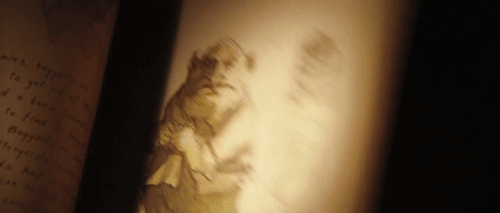
What is Fantasy?
Fantasy in its simplest term, is any form of media that diverges from the mundane reality of our ordinary everyday world in one facet or another. A story does not need to have magic, or dragons, or princesses to be called a fantasy story. While those are common motifs, in truth, all it takes to be considered fantasy is to not adhere to the real world in one form or another. Good Omens is a fantasy story, despite having no dragons or princesses anywhere. A Song of Ice and Fire has dragons and princesses, but magic is scarce and seldom ever seen. The Song of the Sea has a lot of magic, but a lot fewer dragons.

MEDIEVAL FANTASY
The story takes place in a fantastical world of the author’s design with a medieval or renaissance inspired setting, world view, and/or political structure. Renaissance Fantasy doesn’t really tend to exist on its own, so any setting with Renaissance aspects tends to just get lumped in with Medieval Fantasy. I don’t even really need to explain this one to you. It’s the most common subgenre of fantasy. A medieval fantasy does not have to be set in the real medieval period of Earth’s history, but rather, a medieval fantasy is any story set in a fantastical world that makes use of a medieval-based society as its setting.

HISTORICAL FANTASY
This is a story in which fantastical elements are included in real world historical settings. This is any historical setting where there’s a King of England but also a dragon or trolls to deal with. There’s almost this sort of unspoken rule that any story set in Ancient Greece will inevitably be Historical Fantasy. Arthurian Fantasy, Mythology Fantasy, and Fable Fantasy could all be considered subcategories of Historical Fantasy, since most instances of these genres would be classified as Historical Fantasy, though there are exceptions. As an example, Once Upon a Time and the Fables comics series are both Fable Fantasies, but are not Historical Fantasy. Likewise, Rick Riordian’s Percy Jackson-verse is clearly Mythology Fantasy, but is not Historical Fantasy. Classic examples of Historical Fantasy would include tales like Beowulf, The Journey to the West, and Robin Hood. It’s worth mentioning that technically, a story is not Historical Fantasy if it’s set in the era it was written in. However, the Illiad was set in Mycenaean Greece, Robin Hood’s rivalry with Prince John was a later addition to the folklore, and most Arthurian mythos was penned long after the supposed real world figure might have lived and died. But, any story set in a contemporary modernity, such as Percy Jackson, will eventually become Historical Fiction as time moves forward, though it clearly was not written to be that way.
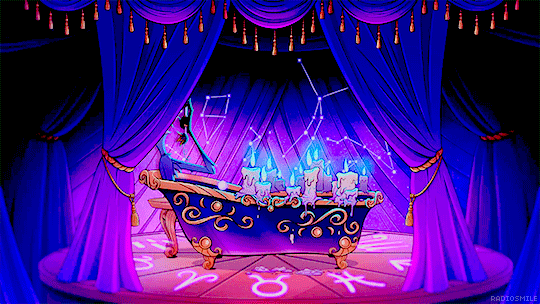
MYTHOLOGY FANTASY
Angels, Demons, Gods, the Underworld, mythological heroes, this is a supercategory that encompasses everything from The Chronicles of Narnia to Supernatural, as well as Good Omens, American Gods, Sandman, Rise of the Guardians, Percy Jackson, Paradise Lost, Helluva Boss and Hazbin Hotel, Smite: Battleground of the Gods, Teen Titans, Dante’s Inferno, and Lore Olympus. Some people get squeemish about lumping Judeo-Christian ideologies in with Mythology (even though it is a mythology) such that the Christian sub-category sometimes gets called Religious Fantasy or Bible Fantasy. But regardless, this is the category for any sort of fantastical work in which supernatural forces are at work. Some divide this section differently. For instance, some will say that since faeries are part of Irish mythology that faeries count as part of mythology fantasy, while others will argue that this is more for the religious aspect of fantasy, with things like vampires and faeries relegated to a subcategory of more generic fantasy creatures.

ARTHURIAN FANTASY
The story revolves around Arthurian mythos. Whether it’s set in the real world of Britain, a fantasy counterpart to Britain, or in some author-created setting, King Arthur is still King Arthur. Sometimes, though very rarely, Arthurian stories have little to no magic, fusing this subgenre with Historical Fiction and not Historical Fantasy. While Arthurian mythos has evolved over the years, the big players are practically household names. Most people are unfamiliar with Sir Galehaut and Sir Dinadin, but almost everyone recognizes Arthur, Guinevere, Lancelot, Merlin, and all the other big players in Arthurian folklore. However, Arthurian myth effectively spans the entire breadth of the Medieval Period, first being mentioned in the Annaels Cambriae which places Arthur in 6th Century Britain, and his stories continued to be written until Le Mort d’Arthur in 1485. Keep in mind, the Medieval Period is from 476 - 1500, and Arthurian mythos spans about 800-900 of those 1,024 years. Due to his story spanning so much time, many elements of Arthur’s story have been forgotten or quietly put aside over time. Try to tell someone that Arthur put every newborn born in the month of may on a boat and sank it to prevent the prophecy of Mordred from coming true, and you’ll probably get a bunch of horrified looks from people who swear up and down that the Good King Arthur would never do anything so cruel. Even other elements shifted around. Ask who mordred’s parents are, and you could argue Arthur, Morgan le Fey, Morgause, Anna, King Lot, and more. Depending on how deep down the rabbit hole you’re willing to go, you can read stories of King Arthur fighting his nephew Oberon for control of Fairyland. Arthurian mythos, like mythology fantasy, tends to get the curbside drive-by approach. People repeat the elements they’ve heard a million times, while never dusting off any of the lesser known elements that would give the story a breath of fresh air.

FABLE FANTASY
Technically, all Arthurian Fantasy falls under this umbrella. Fable Fantasy is the genre term for fantasy based on fables, folk tales, and folkloric figures. Robin Hood, Reynard the Fox, Fairy Tales, Mother Goose, Baba Yaga, if it has persisted through generations of storytelling, and has had a lasting impact on the cultures that know the story, it can be considered a Fable Fantasy. Any story that pulls from these elements can likewise be considered Fable Fantasy because they are pulling from these fabled origins. So, a retelling of Beauty and the Beast is a Fable Fantasy... unless the storytelling has twisted the story so much that it’s no longer in the Fantasy genre. For more variations of this genre, well-known pop culture characters, much like Robin Hood and Fairytale characters, can be considered Fable Fantasy. So, Frankenstein’s Monster, Dracula, Santa Claus, the Grim Reaper, Peter Pan, the Phantom of the Opera, the Wizard of Oz, and other commonly retold folk characters can be thought of as more contemporary Fable fantasies. As such, both Wicked and The Phantom of the Opera can be considered Fable Fantasy musicals, as well as the more obvious Into the Woods. Once Upon a Time and the Fable comic series are both modern Fable Fantasy stories. Not all Fable Fantasy narratives are retellings of classic folktales. Peter Rabbit, Alice’s Adventures in Wonderland, Peter Pan, and The Wizard of Oz have all become widely considered folkloric staples, despite being written in the 19th and 20th centuries. Over the Garden Wall, a Cartoon Network miniseries from 2014, is considered to be a modern fairy tale, despite not being an adaptation of any other story, but instead using the tropes and ideas common to traditional old-school fairy tales. When they enter the public domain, I suspect that Dr. Seuss’ characters will likewise be effectively Fable Fantasy, well-known characters that see use and reuse over and over again in other media. Shrek and Disenchantment take a satirical approach to Fable Fantasy, poking fun of Disney and other fairytale narratives and tropes.
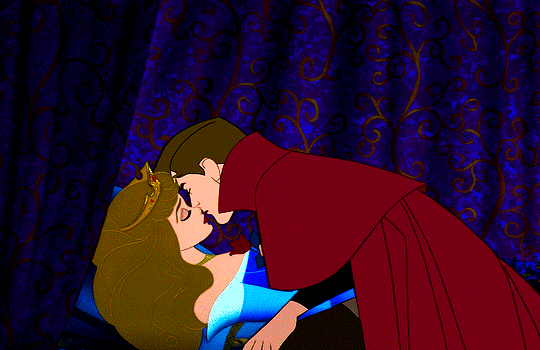
HISTORICAL ROMANTICISM
This setting often goes hand-in-hand with Arthurian Fantasy and Fairy Tales. This is any story that romanticizes and glorifies life in a historical setting. Popular variants include Medieval Romanticism, stories which romanticize medieval settings, Victorian Romanticism or Edwardian Romanticism, for stories that romanticize the time period between 1837-1913, and Period Romanticism, which is more of a blanket term that glorifies the eras popular with Period movies, namely, the 19th century, but sometimes earlier as well. Full of handsome princes, fair damsels, large palace-like castles, and knightly codes of honor, historically inaccurrate period gowns, debutante balls, and steamy Jane Austen-style love affairs, this story paints the past with the most optimistic and flattering image possible. Everything is flowery, poetic, and awe-inspiring. This is the type of setting Sansa Stark thought she was in at the start of A Game of Thrones before G.R.R Martin pulled the rug out from under her and revealed Westeros to be a Cynical Low Fantasy. By the very virtue of the company’s child-friendly marketing, Most Disney movies, and by extension, most movies set in the past aimed at children can likewise be categorized as Historical Romanticism, as they brush the darker side of history under the rug. The Princess Bride, Bridgerton, Don Bluth’s Anastasia, and most versions of Robin Hood and Arthurian mythos fall into this category. For contrast, Downton Abbey is not Edwardian Romanticism even though it tries to make life in the 1910s look glamorous, it’s also not afraid to blatantly point out the economic and socio-political issues that were going in in the world at the time. Downton Abbey does not sugar coat the darker side of history, and can therefore not be considered Historical Romanticism.

HISTORICAL CYNICISM
The exact opposite, Historical Cynicism is the name I give to settings that use the trope “The Dung Ages”. Like Historical Romanticism, the most popular variant of this category is Medieval Cynicism. These settings seek to make life in historical time periods look as miserable and depressing as possible. They are designed to make life seem bleak, undesirable, and disgusting. Monty Python and the Holy Grail and Disenchantment take a comedic approach to this, while A Song of Ice and Fire gives a more Epic Fantasy take. Sweeney Todd makes life in Victorian London look positively putrid, and that’s without the cannibalism subplot. The Witcher games seem to merge Medieval Cynicism with Dark Fantasy and Horror Fantasy. This subgenre hinges on Dark Fantasy, but the two are distinct from one another. Expect plenty of plagues, muted color pallets, a cruel aristocracy that enjoys crushing the lower classes under its heel, and mud or dung on everything.

HIGH FANTASY
Magic and fantastical elements are abound in this setting. Expect wizards, dragons, fantastical races, and more. Very frequently overlaps with Epic Fantasy, though they are different. The Lord of the Rings is classic High Fantasy. Most Dungeons & Dragons settings are also High Fantasy, as is The Legend of Zelda. Avatar: the Last Airbender is a High Fantasy Wuxia show, though Legend of Korra veers more toward Historical Fantasy, Steampunk, and Magitech Fantasy with its 1920s Shanghai meets New York City hub location of Republic City. The Elder Scrolls is also a High Fantasy, with plenty of elven races, the Beast Races, and star signs that actually impact those born under them. Each province has its own sort of vibe or subgenre, with High Rock being more Medieval Romanticism while Skyrim is more Dark Fantasy or Medieval Cynicism, but as a whole, Tamriel falls under the High Fantasy umbrella.

LOW FANTASY
A medieval setting where magic and fantastical elements are rare, if not nonexistent. A Song of Ice and Fire is an excellent example. Magic is real and does exist, but it only rarely comes into play. Magic is extremely scarce, and most people one might meet are humans. Even the sight of someone casting the simplest spell is so rare in Westeros that it’s practically unheard of, and the few supernatural elements that do exist in the setting live far out into the wilderness, rarely being seen by people. It’s quite rare to find completely fictional fantasy settings with no magic whatsoever, but they do exist.

EPIC FANTASY
This is any fantasy story on an epic scale. I’m talking well over 50+ named characters. A Song of Ice and Fire, The Wheel of Time, Lord of the Rings, all of these are Epic Fantasy. Yes, these stories usually end up with long book series and a lot of words behind them, but I am defining a genre, not a reading level. Epic Fantasy is about scope, not page length. Common sights in Epic Fantasy are grand battles, multiple POVs, world-spanning events, extremely high stakes, very powerful players in the narrative, and The Final Battle Between Good and Evil.

QUEST FANTASY
Any fantasy work which is primarily driven by The Epic Quest. Often overlaps with Chosen One narratives. Lord of the Rings, Eragon, The Legend of Zelda, Avatar: the Last Airbender, and the Percy Jackson books are all examples of Quest Fantasy. The bulk of the narrative is centered on The Journey and the trouble the heroes run into along the way, or are otherwise all about The Adventure, not the destination. Our band of heroes have a goal given to them and the story is focused on following the heroes on their journey. However, this is not strictly a Chosen One category. The Legend of Korra is a Chosen One Fantasy, but is not a Quest Fantasy because Korra’s main objective changes every season. Percy Jackson toes the line due to the Oracle’s prophecies, but I wouldn’t call him a Chosen One because his birth wasn’t written in the stars or anything. He just happens to be a child of Poseidon and at the center of the story. If you switched him out for Nico di Angelo or Jason Grace, the story is still functional. In Lord of the Rings, Aragorn is the True King, but Frodo is the protagonist, so I wouldn’t call Lord of the Rings a Chosen One Fantasy either. This can also tip into other genres. Monty Python and the Holy Grail is a Quest Fantasy. The entire premise of the movie is Arthur and his knights questing for the Holy Grail. Likewise, The Princess Bride is all about Wesley’s quest to rescue Princess Buttercup from Prince Humperdink. Treasure Planet is a steampunk quest fantasy telling the story of Jim’s search for Flint’s treasure, where the journey there is the bulk of the story. Sinbad: Legend of the Seven Seas is a quest fantasy with elements of Historical Fantasy and Mythology Fantasy all about Sinbad’s perilous voyage to the edge of the world to save his friend’s life.

DARK FANTASY
It’s like normal Fantasy, but bleaker and darker. The Witcher and Skyrim are good examples of Dark Fantasy, where monsters roam the wilderness, and people live in fear of the unknown beyond the safety of their villages. The general tone is more cynical, desolate, or hopeless. Some Dark Fantasy is more about just being gloomy or creepy. The movies Labyrinth and Dark Crystal are two good examples of a Dark Fantasy that’s less bleak as they are weird, yet still dark. The Black Cauldron is a perfect example of a Dark Fantasy with a dreary and macabre aesthetic paired with a genuinely horrifying necromancer villain. Pan’s Labyrinth is another good example of a Dark Fantasy. Over the Garden Wall and A Tale so Dark and Grimm are both Dark Fantasy stories as well as Fable Fantasies, reveling in the darker aspects of Grimm fairy tales.

HORROR FANTASY
It’s like Dark Fantasy, but scarier. Expect there to be horrifying monsters unlike any seen on earth. Your protagonist is probably either hunting or being hunted by something horrible. Either a monster is trying to kill them, the world is trying to kill them, the gods or demons are trying to kill them, or magic is trying to kill them. Again, The Witcher is a great example of Horror Fantasy. Geralt is a hunter of monsters, and often fights things like Werewolves, ghouls, wraiths, and lesheys. Red Riding Hood (2011) is a great example of a vaguely medieval Horror Fantasy. Depending on where you stop the line at what’s horror, what’s fantasy, and what’s Horror Fantasy, you could justify just about anything as Horror Fantasy. From The Elder Scrolls V: Skyrim with its undead Draugr and vampire clans, to Resident Evil VII with its vampires, or even certain Scooby-Doo! media (though Scooby-Doo! is certainly on the mild end of horror.)

PARANORMAL FANTASY
Unlike Dark Fantasy or Horror Fantasy, Paranormal Fantasy takes horror elements and spins them to be more romantic. This is where you’d slot in romantic or atmospheric ghost stories. Tales of witches and vampires in a macabre setting where they’re not the villains. The Addams Family fits the Paranormal Fantasy, as does Sweeney Todd, Sleepy Hollow, The Phantom of the Opera, Hotel Transylvania, most Scooby-Doo! media, Beetlejuice, the Halloweentown movies, The Nightmare Before Christmas, or Hocus Pocus. Basically, if it could be a child-friendly Halloween story, or was made by Tim Burton, it’s probably Gothic Fantasy. I guess you could also call this Monster Fantasy, Gothic Fantasy, or Spooky Fantasy.
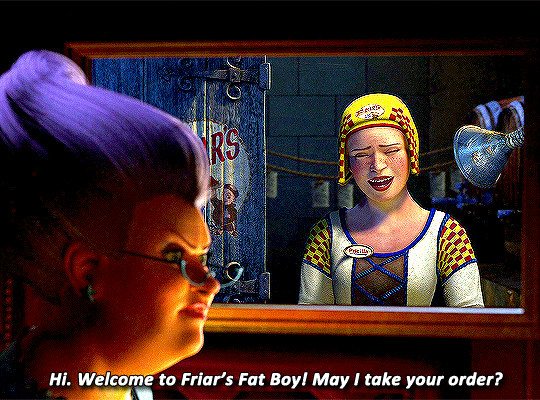
CONTMPORARY FANTASY
The setting is medieval with castles and princesses, but there’ll also be modern conveniences or nods to pop culture in the land and setting. Dave the Barbarian is a good example of this. The royal family are all barbarians (which basically just means vague warriors that wear fur loincloths), but then they also have malls, and Dave made a megaphone out of a squirrel, some string, and a megaphone. Shrek does this too, especially in Far Far Away with nods to Starbucks and Burger King, among other modern franchises. Disenchantment also uses this as a basis for comedy. Typically, Contemporary Fantasy only uses modern conveniences in a medieval setting as more or less sight gags, punchlines, or to poke fun of corporations and consumerism. These are also the fantasy stories most likely to reexamine tropes and shine a critical light on the genre, whether by showing the farm-boy turned king being royally inept, the mental issues caused by locking the princess in a tower for years of her life, or how quickly princesses married the first man that came along without so much as a conversation beforehand.

URBAN FANTASY
The wizard has a smartphone, the prince has a Grindr, and the city watch patrol the streets on motorcycles. A standard fantasy world has come to the modern age, with skyscrapers, internet, cars, and cellphones. The familiar world gives the audience a firmer foot to ground themselves in this sort of story, compared to something set in the past, but it has its own hurdles. Namely, a modern world still needs a rich history. You also need a story that can’t be solved with a gun and an internet connection. Urban Fantasy is a very broad genre, from Hidden World Fantasy like Percy Jackson or Harry Potter, to Merged World Fantasy like RWBY. There’s also some head scratchers like the Warriors Cats books. It’s definitely Urban Fantasy. A cat society living in the forest is a fantasy, and the story is set in our modern contemporary world. But labeling the series beyond Urban Fantasy is where it gets tricky. Isekai borders on Urban Fantasy, as the magical overlaps with the modern world. The Magic Treehouse and the Arthur Spiderwick Chronicles are two great examples of Urban Fantasy in children’s literature. Goosebumps is Urban Horror Fantasy.

ISEKAI FANTASY
These are stories in which an ordinary human (or group of humans) are transported to another world in order to learn a lesson, grow, and come back home wiser, stronger, and ready to face the problems they ran away from. The Wizard of Oz, Peter Pan and Wendy, Alice’s Adventures in Wonderland, as well as movies like Stardust, Coraline, and Spirited Away, or TV shows like Over the Garden Wall, The Owl House, and Amphibia are all prime examples of this type of story. The Chronicles of Narnia is an excellent example because as the series goes on, the older Pevensee children stop needing to go back to Narnia. By Voyage of the Dawn Treader, Peter and Susan have learned all they need to from the other world, and don’t go back, leaving only Edmund and Lucy to go with their cousin instead. Because their arcs are over, they have no reason to return.

ROMANCE FANTASY
It’s a romance novel with supernatural elements. Usually, it’s a human falling in love with something inhuman, which we often call Paranormal Romance. However, this can also include stories of a fairy falling in love with a dwarf, so there’s a wider net here. This isn’t just a story with a romantic subplot, this is your Romeo and Juliet type love stories. Your Beauty and the Beast retellings. The romance is the main plot, and the supernatural elements simply make the romance more exciting or the problems of the couple more entangled in cultural baggage. Obviously, Twilight is a popular example, as is The Cruel Prince, The Captive Prince, and Of Beast and Beauty by Stacey Jay.

MAGITECH FANTASY
This is when a fantasy setting has magic-powered technology. The guardians and Divine Beasts from Breath of the Wild are a fantastic example of Magitech in a medieval fantasy setting, as are the steam-powered automatons of the Dwemmer in The Elder Scrolls. The Legend of Korra sort of fits here. The world of Avatar has advanced to include airplanes, cars, and radios, none of which are powered directly by bending, but benders do work in power plants, performing lightning bending to generate electricity. It’s certainly a middle ground between steampunk and magitech fantasy. However, the world doesn’t have to necessarily include technology, any setting where magic is a power source for anything can work. Jak and Daxter: The Precursor Legacy is a great example of Magitech Fantasy. Eco is a natural magical resource that give magical powers and effects. So, having doors that open when exposed to the electrical energy of blue eco makes sense. And while it’s never stated, Jak II has many automatic doors in Haven City that may very well run on an electric power grid fueled by blue eco veins. But eco largely gets dropped in the sequel games in favor of guns, though the guns themselves may actually be powered by eco as well. So it’s hard to say. RWBY surprisingly fits into Magitech Fantasy. Like Eco, Dust is a magical natural resource that can be used to create magical effects. The world is full of airships, shape-changing weapons, bullets and other weapons being infused with dust to give them magical effects, and Penny, a definitely real girl.

GASLAMP FANTASY
This is what happens when Steampunk has just enough fantasy elements to land in the Fantasy section. Gaslamp Fantasy is any fantasy story set in the era of gaslamps, while still incorporating fantastical elements. Dracula, Springheel Jack, Mary Poppins, Peter Pan, Sherlock Holmes vs Dracula, basically, as long as it’s set in a Victorian setting and has supernatural elements, it counts as Gaslamp Fantasy. However, it’s definitely one of the less popular subgeneres, and I couldn’t really name any others.
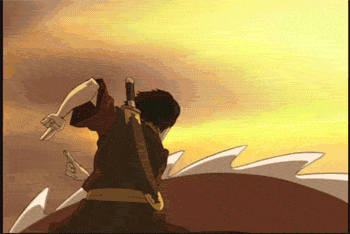
WUXIA
A fantasy setting that focuses more on East Asian history, folklore, and mythology to craft its setting. Wuxia is a broad term, including everything from Spirited Away to Crouching Tiger, Hidden Dragon and Dragonball. However, often times in fantasy, European-inspired regions are complicated and diverse, while Asian-inspired regions are homogenizing, if not orientalist. We can differentiate Irish, Scottish, and Welsh folklore from English, but somehow, not treating all Asian cultures like they’re the same is too taxing for some writers. So, if you’re going to tackle writing Wuxia Fantasy, do your homework, try to make the cultures thorough and intricate, and don’t profess yourself an expert on another person’s culture if you’re not Asian yourself.
316 notes
·
View notes
Text
Since Daki and Tecchikawahara have both stated it was, as the swordsmith, Haganezuka's fault that Tanjiro's sword got so chipped in battle, I've been asked if Haganezuka is indeed a bad swordsmith. At the time I said that Haganezuka is a fine swordsmith, albeit a perfectionist surrounded by perfectionists.
However, I came across an interesting comment from real life master swordsmith Asano Taro in this video:
"Katana is a perfect instrument. It is perfect in its creation and the way it looks. The theory behind its creation is also perfect. It doesn't have any faults. And if you use it perfectly well, it will cut anything with perfect precision. But if your spirit and movements are not at peace, the katana will bend or break instantly."
He goes on to say that the samurai is the one at risk for damaging the katana if he isn't mindful of himself, and Haganezuka would be quick to join him in blaming the user for damage, but what with Haganezuka being prone to fits of passion, I'd like to reconsider the question of Haganezuka's skills and final product.
It bears restating that while the smith gets a lot of credit for forming the iron into the blade, there are many other entirely separate and necessary specialists who contribute to the completion of a sword--the engraver, the artisan who makes a sheath, etc. While we see some evidence of crossover in the production of swords in KnY, we don’t know if there is any division of labor in the swordsmith village, or how much. We're going to come back to this point, but for our purposes in this post, we'll focus on sword polishing as a separate discipline.
In historical context, sword polishing was respected as a unique art as far back as the Heian era, and even though the sword production industry took a hard hit when swords were banned in the Meiji Period, they nonetheless were popular as works of art. This means that sword polishers were still in demand, more for bringing out a sword's beauty than for sharpening its usefulness. One famous sword polisher of the Taisho Period, Hirai Chiba, was said to be the sort of genius that only comes around once in every two hundred years, and he could make even the oldest, most decrepit swords glisten, but his methods were so genius that if others tried to further polish his work, they had a tendency to ruin it. The techniques are as unique as brushstrokes; we saw Haganezuka hard at work at a series of rough and primary whetting against large whetstones, but Muichiro didn't let him even finish the first part of initial whetting. That's to say nothing of getting to the series of small tools, many of which are so minute that they can only be worked with a craftsman's thumb.
We see some of the attitudes of the Taisho Period in the light novel chapter in which Tecchikawahara tries find a wife for Haganezuka, but she doesn't appreciate Haganezuka's career because swords aren't necessary in modern society. (It still baffles me that Tecchin thought a woman with these sentiments should be married into the swordsmith village, but he did choose her purely for having a cute photo.) She tries to convince him to switch to making kitchen knives or tools instead of barbaric weapons, but Haganezuka affirms that it's an honor that his swords are used by someone who puts his life on the line to protect others' lives.
So, is he a good swordsmith or not?
Our protagonist assures us he is. However, I've heard it said that you should strive to be the person you dog thinks you are, but perhaps it is higher standard to try to be the person Kamado Tanjiro thinks you are, so we'll set this aside.
What's more revealing, perhaps, is that Urokodaki already knows Haganezuka pretty well. Since Haganezuka is 37 and Urokodaki was in his prime at least 47 years ago when he trapped what would become the Hand Demon, it's unlikely that Haganezuka has ever produced any swords specifically for Urokodaki. Possibly Haganezuka's father did, in which case Urokodaki might had been familiar with little Haganezuka's upbringing. But, if Urokodaki is familiar with adult Haganezuka's work and personality, perhaps he's seen Haganezuka deliver swords to Final Selection graduates before... which might mean Haganezuka is Giyuu's swordsmith, too. If that's the case, I'm willing to bet Giyuu's never earned any special ire.
However, let us not forget that Haganezuka likes Tanjiro because Tanjiro keeps requesting swords from him. Other swordsmen haven't been able to deal with Haganezuka's personality and requested swords from other smiths. Giyuu could very well be among those swordsmen who quit this artisan, and a series of people being unable to look past his personality and appreciate his work doesn't reflect well on Haganezuka as a craftsman.
Back to Urokodaki, though, he's always the one who blamed the swordsman for wear and tear to the sword. If he ever felt Tanjiro got a bad sword, he'd likely have told him so and put in a complaint, making a more valid reason to request a different swordsmith.
To recap the post where I first considered this question, I think a big issue with Haganezuka's fervor is that he was raised by, and presumably taught the most incredible swordsmith in the village. Tecchikawahara may have been hard on little Hotaru because he was talented, and therefore he was dismissive of anything less than genius.
So then where was does genius come into play?
Oh yes, with the beautiful Sengoku era sword, and Haganezuka's polishing of it.
Let's take a step back to appreciate this element of the process in context, and assume Haganezuka is familiar with every stage of the process, and more skilled in them that you or I can ever hope to me.
First, Haganezuka makes sure to make sure Tanjiro knows about the special iron his sword is made of--and since Haganezuka and Gotouge thought that was important, I thought it was important as a KnY nerdery blog to make sure all of you appreciated this too. However, due to the labor intensity of the process of making iron sand into lumps of ore, I suspect Haganezuke may not usually be involved in this part of the process, even if he may have some experience with it.
When it comes to other elements besides the smithing, he perhaps wasn't a preferred artisan for things like making hand guards as the Rengoku clan likes them, or someone who had the right to engrave 悪鬼滅殺 ("eliminate all evil demons") on the Pillars' swords; perhaps there were village specialists, or other swordsmiths who improved their engraving skills because they were responsible for Pillars. Since Tanjiro didn't need a particularly crafty sheath, I'm inclined to think it was either average craftsmanship if Haganezuka made it, or it may have been outsourced to someone else in the village.
However, let's pause here on sheaths. Shinobu's Breath technique works due to the specialized sheath, so her sword and sheath must both be extremely high caliber. Tecchikawahara is credited with them, meaning the greatest swordsmith is adept in multiple disciplines. Tecchikawahara's son is as well, for he developed a special sheath for Iguro to draw his curvy blade.
I bring this up because Tecchikawahara has a son, presumably, the heir to his techniques. Although adopting a son to become an heir to a craft was common even in the aforementioned Taisho craftsman Hirai Chiba's circle, we can infer that Tecchikawahara did not consider Haganezuka Hotaru an heir, even though he raised him since the age of two.
But?? What is this in Chapter 105?
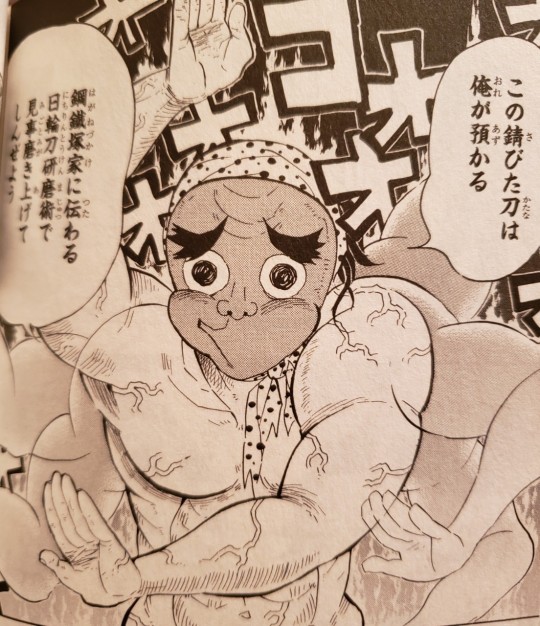
The Nichirin Blade Polishing Technique Passed Down Through the Haganezuka Clan??
Okay, but... Hotaru-kun, your dad didn't raise you, how did you learn these techniques??????
Whatever they are, Haganezuka has full confidence in them, which comes in contrast to how he was feeling about his smith abilities at the time. He was so upset about how his faulty blade might had put his favorite (only?) client in danger that he was off in the forest putting himself through training, the likes of which we can only imagine. If, as swordsmith Asano said, imperfections in the self may risk damage to the blade, does this mean his hot and volatile personality was being reflected in the metal; even if he was totally absorbed in the process, what there still some tension in his muscles revealing his excitement, shaking the delicate blade as it formed? Maybe, Haganezuka always saw something in his own work that he knew was lacking, and maybe Tecchikawahara has always seen it, too.
After all, Haganezuka knows very well how to appreciate good work; he was so absorbed in admiring a rusty sword that he could ignore an Upper Moon wanting to eat him. He could tell right away that it was likely good Sengoku era iron (historical note: we don't actually have good enough records to know why Sengoku era swords had higher quality iron, but it's possibly due to imported iron). Despite having no idea who the swordsmith was, Haganezuka could probably feel the strokes of his hands, like how a skilled calligrapher can see the pace at which someone moved with the brush, or how a master pianist can imagine the movements of the hands at someone else's keyboard. Haganezuka credited that mystery swordsman with choosing and making the engraving himself, and imagined him at work at a whetstone, thereby implying he'd have also done the polishing himself. Like how the tradition of engraving Pillars' swords came later, this may also be the origins of Nichirin blade swordsmiths taking more ownership of more parts of the process than their regular swordsmiths counterparts.
That said, like they have their unique styles and pride, they also have those things passed down in the family, and that might make certain artisans more specialized in some areas than others. If the former master of the Haganezuka techniques had no heir other than Hotaru, Tecchikawahara might have tried to amend the relationship between child and parent and encouraged Hotaru to apprentice under his own father.
So then what of the former Mr. Haganezuka now? Well... in Chapter 105, Tanjiro goes on to orate to Genya that the special sword polishing process takes three full days and nights (funny, so does making the tamahagane, but that's also requires a teams to constantly feed the fire). This polishing method is extremely taxing on the person doing it, and as Tanjiro was told, some people have even died doing this. So, you know, maybe that's some good angsty fanfic material if this has happened in recent swordsmith village history.
In other words, Haganezuka was already putting his life on line before Gyokko attacked.
However, whether it was a result of his recent solitary training in the forest or in his conviction in the Haganezuka Family Polishing Techniques and his own execution of them, he betrays no worry about whether or not he'll be able to finish, and insists that this task be entrusted to no one other than him.
Which is to say, Haganezuka may be an alright-to-very-highly-skilled swordsmith, but his true strengths may lie in what's usually an entirely separate discipline.
From a narrative and character arc perspective, this means that Haganezuka has been somewhat freed from the pressures to live up to Tecchikawahara's standards in overall sword production, especially since he can't manage to keep many clients, or perhaps hasn't managed to keep anyone but Tanjiro. With Tanjiro as his perhaps only client, that means he serves a different purpose for Tanjiro now, as Tanjiro is the owner of such a fine sword---like how no one could work with genius Hirai Chiba's techniques, likely Haganezuka is the only one who can be trusted with the care and upkeep of such a valuable sword.
He's found his true calling, one might say.
Not that this makes me think he'd give up making swords--not at all, he loves them too much! But maybe in feeling assured that he's serving Tanjiro's needs, it can allow him to relax more, and enjoy the process, and relax knowing that Tanjiro's not going to chip his new and possibly more creative works.
For Tecchikawahara, who presumably already has the heir to his own techniques, seeing Haganezuka reach his full potential in the Haganezuka tradition may be what pleases him more than any unfathomably unbreakable sword.
139 notes
·
View notes
Note
A hanfu isn't just a robe, though. It's a specific type of traditional outfit that has even more specific variations, and while you could describe it more specifically (e.g. she put on her red ruqun, with a pleated horse-face skirt), it isn't always relevant. I've never seen anyone bring this up for, say, kimonos, and I don't think the GOT comparison is fair, either. It'd be more like "he puts on his armour". What type of armour—lamellar, chainmail, heavy, leather? It doesn't always matter. 1/2
--
2/2. Putting down a category of traditional clothing as "meta terminology" also rather irritates me. Again, looking at kimonos. Perhaps it's unfamiliar because CN fashion isn't as widespread as JP, but it's literally just what the broad category of clothing is called, and within the context of danmei fandoms, it shouldn't be unfamiliar knowledge. Trying to Americanize everything by simply calling everything a 'robe' loses the point entirely and is the equivalent of really terrible translation.
Sorry, one more thing. When I picture a "robe", I think of wizards. DND. Bathrobes. None of which bear any similarity to a hanfu, and unless you want to describe "a parted robe made of flowing Yun brocade with loose sleeves that wraps around the body, with a wide collar that has its right lapel crossed over its left, tied at the waist with a belt, with a jade pendant weighing down the long skirt" every single time it's brought up, I'm pretty sure "hanfu" is a more accurate descriptor by far.
Uh... anon...
1.
'Robe' is an extremely vague term that absolutely is used for all sorts of garments from all over the world.
The fact that you associate it with a tiny fraction of its conventional meanings isn't going to change how other people use it.
2.
I am indeed more familiar with kimono than hanfu, but I thought the other people did make explicit what their issue is, and it exists for Japan too.
Depending on when your canon is set (or its vague, handwave-y apparent time period for more fantasy canons), the word may not have been in use yet.
'Kimono' as a word is possibly as recent as the 19th Century, though I see one etymological dictionary saying 1630s. Prior to the 19thC, a lot of things we would now call 'kimono' were known as 'kosode'. The further back you go, the more other terms there are and the more the distinctions matter.
I'm personally a fan of fiction set in the Heian period, and they would absolutely not have been calling anything a "kimono" then, nor do the robes look like modern kimono.
Furthermore, a generic-ass word like 'wear on upper body'+'thing' doesn't get its modern interpretation until it has significant competition from Western clothing. Today, it has a relatively narrow range of interpretations based on the calcified form of traditional Japanese clothing that still hangs on.
It's an absurd affectation to insist on calling all ancient Japanese clothing 'kimono'.
That wouldn't be de-Americanizing your writing.
That would be "According to keikaku".
--
From what I've seen in other people's meta posts about Chinese fandoms, the reason people object to 'hanfu' in fic is that this word has gained a lot of popularity in very recent history as part of the hanfu revival movement.
While it existed before that, it wasn't used so consistently, and it mainly turned up in contexts talking about Chinese as opposed to foreign clothing. It doesn't seem to have been a general term used like "So-and-so put on his completely normal outfit to get ready for the day".
People are using it (outside of fic) to talk about a specific range of historically accurate Chinese clothing. It doesn't cover everything, and in the modern and highly gatekept usage, it specifically doesn't cover historically-inspired fantasy costumes like those on The Untamed.
If you're Chinese and you feel it should cover those, fair enough, but that isn't what a lot of the hanfu education blogs have been saying.
People aren't pulling this out of their asses out of a desire to be American. They're getting it from hanfu blogs asking them not to use the word like that.
If you think those blogs are wrong, please say that.
44 notes
·
View notes
Text
On "you have to learn the rules so you can break them"
Being an artist of various stripes (mostly writing and pixel art, but also game design, a brief stint in theatre, and recently I've been dabbling in music composition) one of the statements I have always hated the most is "you have to learn the rules so you can break them."
Of course, there are multiple reasons for this. Number one being that I have always had a problem with any authority that appears to be totally arbitrary. Number two is that this phrase absolutely gets abused by elitist dickweeds who think that taking creative risks is a privilege that has to be earned via a period of rigid devotion to The Rules(TM). But I think the biggest problem of all is that the sentence is HOPELESSLY vague.
Naturally, this pointed to the phrase being a watered-down version of advice that actually makes sense, so I decided to look it up and see if I could find its origin. In doing so, I found a couple of different versions of the phrase - one dubiously attributed to Pablo Picasso, the other very falsely attributed to the Dalai Lama - but the oldest version I was able to find is from the 1920s, in a magazine called The Bookman.
The quote appears in an article in the July 1921 issue, written by one J.P. Collins. In the article he describes a conversation he'd recently had with Edward German, and... uh. Well.
I was wrong. I mean, I was right in one respect, but I was so wrong.
You see, the original advice isn't any more useful than the popular version of the phrase - in fact, it is exactly the same. But it is given in the blatant spirit of elitism and aversion to counterculture, as seen in the quote's context:
He could not see anything but Nemesis awaiting the present fashion of hostility to tonality and form, a pose on which some mistaken moderns seemed to pride themselves. ... "The only music that can live," he said, "is the music that has the elements of beauty and health in it, and observes some kind of structure and shapeliness. ... You must put in close application and study of the best models, and you must learn the rules before you break them.(")
Or, as Chris Fleming summarized it: "Be original, but run it by us first."
So yeah! This isn't just some simplified, but ultimately well-meaning adage about the benefit of understanding why a rule exists so that you understand how it can be broken. It's just saying that "good" art follows traditional standards, and if you don't first memorize and learn to adhere to those standards, your art will have no lasting impact or purpose beyond simple contrarianism. That's such great advice! /s
So now that we've established that this advice came from a colossal douchebag who meant nothing good by it, I'm going to declare "death of the author" and take a look at a couple other versions of this quote, and the difference in the philosophies they're espousing.
First is a version popularly attributed to Picasso:
"Learn the rules like a pro so you can break them like an artist."
This is basically the same as German's philosophy, except that it was allegedly said by a cool cubist who would definitely be down with you doing whatever you wanted after you finished your anatomy classes. So that's an improvement of sorts.
And while Picasso probably didn't say this, I can understand the sentiment: If you have a certain effect you want to achieve, but you don't know how to craft your art in a way that actually leads to that goal, the only thing you're going to make is a mess. And the bigger the risk you're taking - which is actually what you're doing when you "break the rules" - the bigger a mess you can end up making if things don't go the way you intended, and the less likely it is that you'll understand how to fix the problem.
For this reason, novice artists are often advised to stick to following the rules (actually a set of guidelines designed to reduce your risk of fucking up) until they gain a stronger understanding of how to translate ideas and intention into a satisfying result.
To be clear, there are contexts in which this is extremely good advice. Not every form of art is 100% safe to experiment with; some, such as architecture, have both soft artistic rules that can be played with and much firmer technical rules that should only be altered if you're sure you can safely do so - which does require you to remember and understand the initial ruleset. Plus, even "safe" media, like writing, have technical rules that serve useful purposes like "making your work legible and coherent".
This can also be helpful advice for total beginners, who may not even know where to start with the medium in question, much less what they want to do with it - and for whom a big artistic failure would be less of a learning experience and more of an incomprehensible, confidence-crushing blow. In this context, following a ruleset is actually pretty great, because it helps them to build familiarity and confidence with the medium of their choice.
When it comes to other contexts, however, I find this advice to be misguided. One reason is because of how easy it is for an amateur artist to pick up "rules" that are dramatically overapplied at best, or pure opinion at worst - either from their teachers, artists they look up to, or even random weirdos with just enough confidence to make themselves sound authoritative. Advice is cheap, especially on the Internet; good advice is much rarer.
The other issue is that, on a practical level, learning to follow the rules does not teach you how to break them - it just teaches you not to break them, or that when you do, you need to stay as close to the rules as possible or else risk ruining your whole piece. Which is great advice in theory, but in practice, it's abstinence-only art education. People don't just need to learn risk avoidance; they need to learn how to recognize and navigate risks, or they're gonna hit a wall that they're not going to know how to work around.
On that note, let's have a look at the other version I found of this quote. This one's just completely misattributed to the Dalai Lama, its actual source being a revised version of the "Instructions for Life" chain letter. It goes thus:
"Know the rules well, so you can break them effectively."
In my opinion, this is a much more useful interpretation of the phrase. It is instructing you not simply to learn the rules, e.g. through rote memorization and practice, but to understand them, to know how and why they are used - and not because breaking them is a privilege to be earned, but because one day you're gonna have to break 'em, and forewarned is forearmed.
Of course, it still has limited applications when it comes to art. It's a good piece of advice, to be sure, but it leaves off a fact more particular to art than almost any other field - that one of the most effective ways to understand a rule, after you've got the basics down, is to break it and see what happens.
So in the end, while it's got a lot more staying power, I still wouldn't treat it as a universal rule. And that, I think, is the core of my issue with the way people repeat this line - not this version in specific, but any of them.
Because for some reason, people have a nigh obsessive fascination with pithy little phrases. We love to bandy them about as if their brevity and catchiness is a proven indication of some fundamental truth. And that's fucking ridiculous. We need to stop that.
But yeah. I definitely don't think this sentence is completely without merit. But I think that, like most catchy sayings, it's helpful to examine what it means, why we believe in it, and and what its functions and limitations are.
You might say that we need to understand the rule so we can break it.
18 notes
·
View notes
Text
I'm in a bit of an in-between period rn of what i'm focusing on writing, so.... do you guys have any preferences what i work on updating next? (no promises, i cannot write on command/ i do not control what daydream we hyperfixate on etc etc but i can at least Work On what you guys vote for) so peruse the list of drafts here, some published, some not quite ready yet, and pick something that sounds intriguing.
propaganda under the cut if you want something a little more descriptive! otherwise you're welcome to ask questions/ leave your reasons in the replies :)
sleep on the floor: angsty road trip, modern au, etc. i made a whole gifset for this and a pretty banger playlist if i do say so myself.
notting hill au: anya is a famous movie star, dmitry is a nobody bookstore owner, and they cross paths randomly one day when anya is hiding from paparazzi, they hit it off right away, but dating is hard. just one chapter is up so far. i gotta decide on something that happens in the film i was thinking about changing but we could write some other things in the meantime
art heist au: unpublished! anya works at a distinguished gallery, a painting from her late parents' collection they thought had been lost in a tragic fire just recently sprung up into the public eye again, but it's being auctioned off soon and anya isn't happy about it, since she thinks it contains the secrets of what really happened to her family. dmitry visits the gallery in attempts to steal it, but she catches him in the act and they decide to strike up a deal-- if he helps her forge a copy, she'll let him have the original to sell once she does more research and sees if it actually ~contains the secrets~ she's looking for. it's about the intrigue, the drama, the mystery, the reluctant alliance turned romance. good stuff. as long as i can figure out a plot structure aslhkdf
post breakup/get back together fic: unpublished. slightly inspired by the song 'if the world was ending,' but instead of an earth quake it's a snow storm and talk of the world ending with the new year. set during new years eve, anya visits him for the first time since they broke up a year ago and Talk about things that happened, interwoven with some flashbacks of their relationship from beginning to end. i also made another banger playlist for this guy.
equestrian au: dmitry and vlad are show jumping trainers down on their luck, anya is the new stablehand dmitry finds sleeping in the stall with her ugly horse (pooka <3). but when vlad decides her hidden talent is worth sculpting into a refined show jumping career, the three of them team up to make it to the FEI world cup in Paris, where Marie Feodorovna will be watching and contributing to the winning purse. maybe anya will find the home love family she's looking for idk.
crazy rich asians au: inspired by the movie, but without the hazing and the drama and the angst, so it's mostly just a meet the parents au of a sort with some nice and fluffy established dimya. anya's sister is getting married and she wants to use the event as a way to introduce dmitry, her long time bf, to the family. dmitry is excited about potentially asking for the Family Ring (👀) and leaving new york for the first time to visit the homeland (would the wedding be in russia? or would they get married in the french riviera or something a bit warmer?) until he figures out just how wealthy anya's family is. he knew she came from wealth, but not quite to this extent, and gets a little insecure about it. shenanigans ensue.
#my writing#fanfiction#polls#wip#these aren't all of my wips but these are the ones i've been kind of rotating around in my mind#dimya
14 notes
·
View notes
Note
Has Levi discovered the modern cleaning products yet? 😂
How does he feel about them?
From a scale of “I will have Senku recreate these products to be homeworld-period appropriate” to going mildly feral “I WILL bring ALL of these with me brand/logo on full display idc, idc no IDGAF about Erwin’s questions and/or Hange’s pestering—! Mine now” what approach would he take to obtain them?
Nope, (at least in point of time of the story), but when he does, he, will, LOVE, them.
Levi will definitely ask Senku to help recreate ALL cleaning products so he can make it again when he gets back, but let's have a look of where he shows he goes *mildly* feral:
Erwin was worried. It's wasn't about any of the cadets, nor Eren, and not even Hange, which was surprising to him in so many way. No, this was about Levi, and this was setting off so many warnings in his head. Usually his captain was calm and collect, even if he was as anti-social as a rock, but he was reliable to be the common sense when everything else went to hell. But this morning, when Erwin couldn't find him, he set off to collect him for a briefing. It took several tries, but he did find him.
Sort of.
You see, Erwin happened to stumble upon Levi's squad and Hange standing in front of the meeting doors, all with worried looks.
Except Hange, who seemed to be bouncing with excitement.
"He's been in there for an hour now." Petra stared at the door like it was about to burst into flames.
Oluo shook his head, "This typical Levi behavior, you know this."
"Not if you seen the bottles he was carrying." Eld commented.
"Bottles?"
"Yeah, and they were weird looking and brightly color. And I swear one of them was seen-through."
"And did you see those other supplies he had with him? I couldn't recognize any of it." Petra pointed out.
"Do any of us have a clue on what he is doing in there?" Gunther looked about as frustrated as other members.
"Nope! But I want to get my hands on that see-through bottle! It might a chemical I could study!" Hange drooled at the prospect of getting their hands on such product.
That's when Erwin decided to make his presence known, "What exactly happened?"
Everyone jumped and then into a salute, with Oluo responding, "Commander! We just-" and then accidently bit his tongue.
Erwin waved at them to be at ease as Eld took the reins, "Sir, we had notice Levi walking by with an armful of different bottles and was heading for the meeting room. We tried to ask him about them, but he just locked himself in the room. Even with persistent knocking and shouting, he wouldn't respond back."
"ERWIN!" Hange bolted over to him and latched on to his arm, "Please, please, please, please, please open the door! I need to see what Levi has with him! I beg of you!"
He could feel them vibrating so fast that he was starting to shake, "Calm down Hange, let me have a look."
Detaching the mad scientist from his arm, Erwin walked over to the door and knocked on it, "Levi, it's Erwin. Can you please unlock the door?"
There was a muffled sound coming from the behind, but it didn't stop. Nor did Levi respond. Erwin blinked and looked at the other members, who shrugged helplessly.
Sighing, he took out the meeting room key and slid it into the lock and twisted it. Unlocking with a click, he swung open the door only to find-
"Do not step in here! I just cleaned the floors!" Levi shouting may have be rare, but Erwin had heard once or twice to recognize that he was being serious.
Pulling his foot, he noticed five things.
Levi was decked in his cleaning outfit, with apparently some new accessories
He had a large bucket of water and white jug beside him with a white brush with the bristles cover in suds and grime
There were other bottles, just as the other described, on the table.
The room smelled of some kind of chemical and odors.
The room itself was sparkling clean.
That last bit made everyone who peaked into the room look around in awe. All the surfaces in the entire room had the sunlight from the windows glinting off of them, showing a polished finish that were only seen in the royal capital. The wood even showed a brighter color that Erwin thought he would never see again and despite the odd odor, the entire place smelled like citrus.
"Levi, are you... cleaning?" Eld asked, looking back and forth between the room and the man who scrubbing away at a particular spot.
"Congratulations, so you're not as blind as everyone say." The captain muttered from beneath his face mask.
Oluo, who recovered, was now pinching his nose, "What is that smell? It's burning my nose!"
"It's call bleach you idiot," Levi paused to look up, giving Erwin the chance to see the gloves Levi had on that were bright yellow and, made of rubber?
"And don't breath it in directly, you'll die."
"WHAT?!" Everyone, except for him and Hange, shouted with concern for both themselves and Levi.
"I'm sure he's kidding." He told the squad, but there was a bit of doubt when Levi just raised an eyebrow and went back to cleaning.
"Levi! My dear, dear, dear, friend! Would you be so kind as to-"
"No shitty glasses, I'm not lending you one of them."
"COME ON! It won't take long! It's just right there!" Hange stretched put their arms to the assortment of bottles and jugs on the table.
Turning his attention over to them, he saw that the squad was right. They were brightly colored and there were these words on them that Erwin had never seen before. What the hell was Clorox?
"PLEASE!"
"No! Now stop bothering me." Levi didn't say anymore as he dipped the scrub into the bucket and went at it again.
Erwin then recognize the glint in their eyes, which darted between the man cleaning and the bottles sitting innocently on the table that were just a short walk away.
"Commander! No!" Gunther whispered as he shook his head and hands frantically.
Hange, who may be brilliant but still lacks common sense, made a mad dash for that see-through bottle that they were talking about, when suddenly they collapsed to the ground after a white blur struck them directly on the face. All the conscious members turned to the captain and each one, even Erwin, took a step back. Levi, whose hand was still stretched after throwing the mentioned scrubber, was glaring at all of them deep and hard. His eyes were filled fire and simmering rage that he only seen direct to titans.
"Touch any of them and I'll personally feed you to the titans."
And Erwin didn't know his voice could get so low, or dangerous.
Oluo bit his tongue out of fright.
"Now get out, I need to get started on the windows."
Levi's squad didn't need to be told twice as Eld grabbed Hange's wrist and dragged them out with the rest in tow. Except for Erwin, as he and Levi watched the five leave as fast as they could.
"Tch. Baka." He heard Levi muttered out.
Erwin turned back and continued to watch in curiosity as Levi put away his previous supplies and grabbed the see through bottle that was fill with blue liquid with some kind of nozzle at the top.
Imagine his surprise when the captain pulled the handle and the liquid sprayed out onto the window panels and he just started wiping the windows with a white cloth.
"Erwin, I understand our positions as commander and captain, but I will not repeat myself."
He held up his hands, reached out with one, and pulled the door closed. As it shut with a click, Erwin was replaying the events in his head and was wondering what just happened.
A million questions were running through his mind, but one was sticking on;
"What the hell does baka mean?!"
#main character syndrome (with exceptions)#the 40#the_ravenclaw_werewolf#archive of our own#multifandom fanfiction#attack on titan#levi ackerman#erwin smith#hange zoe#petra ral#oluo bozado#eld jinn#gunther schultz#levi our feral boy#ask & answer#watcher0033
30 notes
·
View notes
Text
Part 1 of screaming msm headcanons into the endless void of chaos and fandoms that is tumblr
Gonna have to explain this best as I can
Anyways, this one is about the basics of modern monster society
Firstly, all monsters are species, expect for Legendaries and Celestials.
Wil touch more on those guys in a different one prob.
However, the epic variants of some species, like Kaynas, are so rare that there’s often only one existing at a time. Each species has anywhere from a few hundred to a few thousand individuals, with the amounts of rares varying between species.
Like the monster handlers said that one time, the islands are waaaay bigger than they appear in-game. Most monsters on each island live in the castle, and inside it’s like a luxurious hotel/apartment building, with rooms of various sizes for everyone and various public spaces.
However, a few might live outside the castle in other buildings, usually when there’s no room left for them.
They don’t sing all the time. They actually only do the song once or twice a day depending on the island, and also depending on the island is the time they do it. For example, Cold Island prefers to do it the moment the sun sets, Plant Island in the middle of the day when it’s warm and sunny, ect, just whatever time fits the vibe of the song.
Monsterlings do go to school. They learn the usual stuff, math, writing, history, but there’s also a lot of emphasis put on learning about as many species as possible.
There’s no defined ‘ruler’ of any of the islands as of right now (expect tribal, wait a second). Desciscions are made as a community and when an island-specific tradition, social norm, or law pops up or can end up staying for hundreds of years completely unchanged, until everyone just forgets why it’s even there in the first place.
The only expection to this is Tribal Island, which always has a chief that’s usually voted on.
There were, however, relatively short periods on history where islands did have leaders. For example, Fire Haven was ruled by a Kayna named Dawn when it was first founded after the cataclysm, and Magical Sanctum might’ve had some sort of Enchantling ruler at one point.
The monster world is generally super peaceful, with far fewer historical records of things like wars happening.
There is an economy in existence. Round, gold coins are used as the main currency, while the Pocket Dimension Islands (Magical Sanctum and Ethereal Island) use Shards.
All monsters are able to speak to each other and are fully sentient. They age at about the same rate as humans, though actual lifespan may be anywhere from 60-100 years depending on the species.
There’s no such thing as having a biological sex. Monsterlings are simply referred to with they/them pronouns until they’re old enough to figure it out. But there’s sometimes… questionable… parents who try to decide for their kids. Not cool 😤
As for breeding, it works quite similar to how it does in-game, with inter species cross-breeding creating children of a new species with the right elements.
However, though it’s not shown in-game, sometimes the breeding structure may malfunction and create direct hybrids, which look like an actual blend of their parents species. But these are a VERY, and I mean VERY rare happening, so there’s no way a hybrid could go under the radar anywhere.
And lastly, a bit about etiquette: when your talking to someone, and you need to say their name, but don’t know it yet because you just met them, it’s best to just replace it with species name, and they’ll usually just tell you. It’s considered a bit rude to ask “what are you?” and similar enquiries about someone’s species.
That’s all for now, I need sleep
#msm#my singing monsters#msm headcanon#msm lore#the monsters do be singing#can I move to the monster world please how much is rent#like imagine living on Fire Oasis it would be so darn cool#I can have a Kayna gf
33 notes
·
View notes
Text
Féile na nÚll Menu & Analysis
I had really meant to publish the menu before the event, but ingredient acquisition took more time and effort than expected. In particular, chestnut flour, which I wanted as a thickener for various gluten-free dishes, just could not be found anywhere I tried. I didn't find that out with enough lead time to order it online. Almond flour substituted, and was fine.
Anyway. Here's the full menu, which fed varying numbers of people, but I think about 45 for the feast.
Travellers' Fare (Friday evening): Beef stew with bread and butter (vegan stew on the side, plant butter available, GF bread available).
Saturday Breakfast was produced by the inimitable Lady Meadhbh Rois inghean Uí Chaoimh.
Saturday Lunch: Chicken soup (vegan soup alongside), bread, fruit.
Feast: Roast pork (vegan nut roast on side), Frumenty (rice on side), apple sauce, green sauce, meat pies (mushroom pie on side), creamed leeks (with fake cream), buttered turnips (with plant butter), roasted onions, purple carrots (with plant butter), olives, anchovies, apple pies, blackberry and apple pies (all pies with GF/vegan versions as well, where possible).
Sunday breakfast: Porridge with cream and fruit, stewed apples, boiled eggs, cold ham, and various leftovers, mostly fruit pies.
The emphasis here wasn't on any particular production of period dishes, but on making sure everyone got good solid food. It's also an entirely plausible English Tudor menu, including the frumenty and green sauce as dishes that didn't make it through the Early Modern. As far as I can make out, everyone enjoyed it (although nobody ever tells the cook they didn't). The coeliac and vegan/vegetarian folk expressed particular approval, which was important. Anything I could make GF and vegan was made so (plant butter and almond flour are the two main tricks here).
Gabrielle and Katie were in the kitchen every hour I was, and possibly a few more, and a great deal of credit for the weekend's food being on the tables on time is due to them. Katie also set in, with very limited prior experience, to making pastry for the non-gluten-free pies, and produced some of the best I've ever encountered. She's been designated Head Pastrychef in Perpetuity as a consequence. There were also many other kitchen helpers, who've been thanked appropriately on Facebook. The relevant note here is that we had 4-5 people in the kitchen at most times, which was more than enough, and kept everyone relaxed. The SCA Kitchen playlist (85% mine, 15% Gabrielle's) was also helpful.
So. The first thing that I want to improve is the gluten-free pastry. Making it vegan as well was trivial; replace the lard/dripping with plant butter, and it's absolutely fine. Any fat will do for that, it seems, although since the traditional use for the pastry is the raised pork pie, the meat fats help match the taste. The gluten-free flour, however, could only be persuaded to make a paste, not a pastry - trying to roll it out into sheets simply didn't work. It would take the form of a sheet, alright, but if I went to pick it up, it just broke. An experimental version that Gabrielle and I did before the event could be sort-of lifted into place on baking parchment, but it broke over the contents of the pie. In theory, with a very dense, relatively smooth pie filling (such as a meat pie that's been well-packed), you could get a coherent crust, but I don't know what would happen to that as the contents shrink in baking. Xanthan gum appeared to make zero difference.
So we've some more experimentation to do there. One suggestion is to use an egg or two, which will take it away from being vegan - but a vegan pastry, using plant butter instead, should not be a problem to produce as an ordinary cold pastry. Various things will be trialled.
The green sauce came out particularly well. Órlaith did her usual superlative job of chopping herbs, primarily sorrel and mint, with some basil and thyme, some black pepper, and garlic salt. The liquid base was about 2 parts olive oil to one part white wine vinegar. We only made a small amount, but nearly all of it was eaten. Green sauce is basically a table condiment for the latter end of the SCA period in Western Europe, and I have vague plans to make and bottle some at some stage, to see how it keeps and matures in the longer term.
I made far too much of the frumenty. Bulgur wheat isn't terribly expensive, so I don't feel too bad about it, and the carbohydrates are absolutely the area in which to over-provide. But for my future reference, about 400g of dry bulgur will provide enough for about 30 people without difficulty.
The roasted onions were surprisingly popular. I think we did 11 whole onions, and only one and a half came back to the kitchen.
The meat pies disappeared in their entirety, as far as I can tell. One was a combination of minced pork, minced lamb, and whatever vegetables were to hand; the other was filled with the remnants of Friday's beef stew. I was very pleased to be able to integrate leftovers into the feast; I am completely certain that a rolling use of leftovers in subsequent days' dishes was a standard feature of any period cookery, and we don't often get to do that over a weekend.
The purple carrots were entertaining. I can't detect any difference in taste from orange carrots, but they stain everything they touch a nice shade of purple-blue. I'll get them again if I can just for that.
Overall, I'm pleased with how things came out, and I'll do either of the Arabic or Pre-Norman Irish menus I had partially worked out for next year.
#sca#sca kitchen#féile na núll#medieval food#medieval cookery#tudor food#pies#gluten-free medieval food#vegan medieval food
12 notes
·
View notes